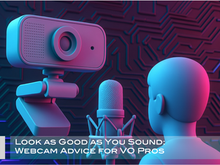(Opinion) Progress Doesn’t Replace- It Evolves: A Look at Tech and Creativity
- Frank Verderosa
- Jun 2
- 2 min read
Updated: Jun 4

I had this conversation twice today, so I figured it was time to write something down.
My career spans 35 years now, and every so often, someone declares, “the industry is over.” But that’s never actually been true.
When I first considered getting into sound, a family friend told me, “Get your real estate license. The industry is dead!” That was in 1985.
Every time there’s a big shift—whether it’s a global event like COVID, or something like the Japanese tsunami that nudged us further into a tapeless workflow—those “it’s over” voices start up again. But history shows us over and over: things don’t end, they evolve.
I was reading a book recently that suggested this exercise:
Write down five negative things you believe about yourself.
Then:
Write down actual evidence to support them.
It’s eye-opening. I was sure some of mine were true… but found zero evidence to back them up.
It’s the same with this industry—music, voice, writing, performance. There is constant fear mongering and panic about AI- but should there be? Of course it’s normal to have concerns, and I’m not saying we shouldn’t- but let’s step back and take a look at all the big things that were supposed to “end it all”… but didn’t.
Jukeboxes Didn’t Replace Musicians
When jukeboxes first appeared in the early 20th century, critics feared they’d make live performers obsolete. But instead, they expanded audiences’ access to music, especially in working-class venues and rural areas. Live music thrived alongside this new way to enjoy recordings, and artists benefited from greater reach and exposure.
Drum Machines Didn’t End Drummers
In the ’80s, the rise of drum machines like the Roland TR-808 sparked panic among percussionists. But instead of replacing drummers, these machines became tools that expanded rhythmic possibilities. Genres like hip-hop and electronic music embraced the tech, while drummers adapted, often combining acoustic and electronic elements in performance and production.
Samplers Didn’t End Orchestras
The introduction of samplers revolutionized music production, enabling composers to replicate the sound of an entire orchestra from a studio. Yet orchestras didn’t disappear—they adapted. Today, sampling coexists with live performances, and orchestral musicians are regularly hired for recordings, film scores, and even layered into sampled music for added realism.
The 30-Second Spot Didn’t Die
In the 1990s, a major advertising trade magazine proclaimed the death of the 30-second TV commercial. It was a bold headline—but premature. Despite the growth of digital platforms and shorter content formats, the 30-second spot remains a cornerstone of brand storytelling. The medium evolved, but the format endured.
AI Isn’t Going to End What You Do
From music to advertising to voiceover, the introduction of AI has raised concerns—just like every wave of innovation before it. But tools are not replacements for artistry. What you bring—emotion, interpretation, context, and creativity—is not something machines can replicate. AI can assist, but it can’t replace human connection.
We’ve Always Adapted—and Thrived
Each technological leap has brought change, but also opportunity. Those who embrace new tools without losing their voice have always come out ahead. This moment is no different. It’s not the end of creative work—it’s the beginning of a new chapter.




























Comments